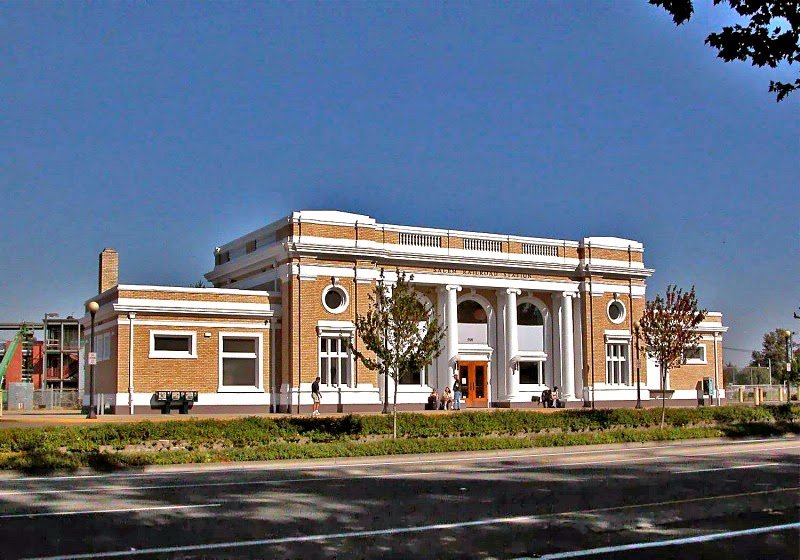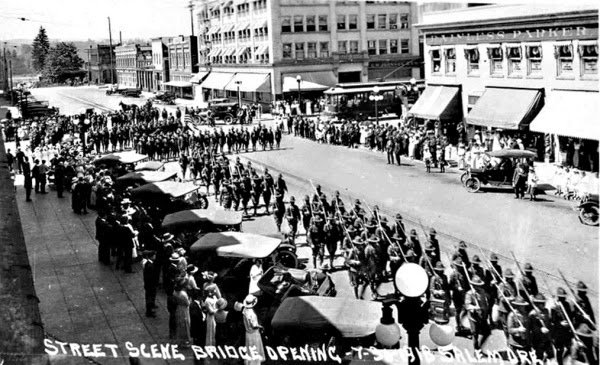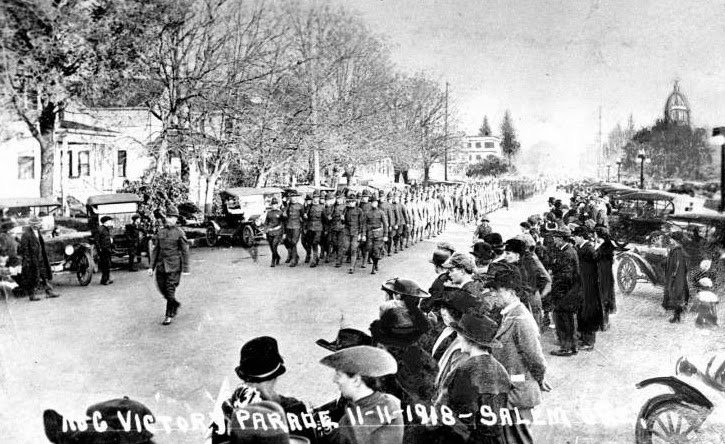World Events
- First Constituent Assembly provides for Russian democratic republic, but Bolsheviks desolve it the same day. Romanov family (Tsar, wife, four daughters and son) executed by the Cheka at Ipatiev House in Ekaterinburg, Russia.
- Soldiers of Allied and Central Powers endure brutal, useless trench warfare. (The novel All Quiet on the Western Front, by Erich Maria Remarque, 1929, is a German soldier’s view of the battlefront. It was made into an Academy Award-winning film in 1930.)
- Kaiser Wilhelm abdicates and goes into exile in Netherlands.
- On November 11, an Armistice is signed, suspending the combat of World War I. President Kilson delivers his “Fourteen Points” speech in Congress outlining peace aims among nations: free trade, open agreements, equal opportunity and self-determination of government. When he sails for Paris to attend the peace conference, it is the first time a president has left American during his term of office.
- New nations are created out of the Austro-Hungarian Empire: Austria, Hungary, Czecho-Slovakia, Yugoslavia, Poland and Romania.
- An influenza epidemic is worldwide: about 548,000 die in the US.
- The first airmail sent between Chicago and New York and time zones are established, approving Daylight Savings Time periodically.
- Magnificent Ambersons, by Booth Tarkington, is the winner of the first Pulitzer Prize for novels. Also notable, My Antonia, Willa Cather.
In Salem
The new Southern Pacific Railroad, the third station in Salem, is rebuilt after a fire of the year previous. It is the standard design for passenger station construction during the heyday of passenger rail service in the United States. Even today, senior residents can remember when rail service to Salem was so personal that trainmen knew where to stop the engine along 12th Street so a family in a carriage would be nearest the street leading to their home. Citizens were proud of their many rail lines through the city and the “Iron Ring” of electric tracks was a convenience to passengers, the canneries and local industry.
When you visit
As passenger rail service diminished during the last decades of the 20th Century, there was a decline in the condition of the Salem station. However, the 1990s brought renewed interest in the passenger rail services and the realization that high-speed passenger service, could again become a vital part of the nation’s transportation system. In 1991, Congress set aside funds for improving passenger rail service. Using that funding source, the Oregon Department of Transportation purchased the station from the Southern Pacific Railroad for about $600,000 in 1995. The department spent another $1 million in federal ISTEA funds to restore the station. The location of the station, now in the middle of town, is interesting place to visit with its inviting, old-fashioned lobby. AMTRAK has five runs, both north and south, through Salem daily and the trains are well patronized.
Other events
- The Center Street Bridge across the Willamette is completed in July with a lively parade to celebrate the occasion. A parade of troops marched east on State Street (above) with a caravan of automobiles carrying local luminaries following.
- Another transportation link is disappointing to Aumsville, Marion, Stayton and Turner. They had asked that 99E go through their towns, providing a more scenic, less hilly route than a new straight highway between Salem and Jefferson. A similar request over the routing of I-5 decades later was also rejected.
- In November the troops march again to signal the Armistice. Luella Patton drove the family Studebaker in the parade.
- A. C. Gilbert, former local resident, opens the world’s largest toy factory featuring a chemistry set. The Council of National Defense tried to eliminate toy production during the war, but Gilbert successfully fought the ruling. In the press, he earned the name “The man who saved Christmas.”
- Winifred Pettyjohn, a widow at 31, placed her daughters in the care of her parents and enrolled at Capitol Business College “to see what she was ‘fit’ for”. She found she had a flair for salesmanship when the local business world was opening itself to women because of the many men enlisting for service in the war. When the men returned, she was unable to keep her job or find new employment. She opened her own real estate office, beginning a career as one of Salem’s outstanding business and civic leaders.
- At the southwest corner of Market and Summer, a traditional two-story frame residence was built this year. The original owner is not known, but it may have been G. L. Busick who lived there from 1926 to 1940. Mr. Busick was the well-known owner and operator of Busick’s Market in the Bush-Brey Block downtown. In spite of its location on a busy corner of Market and Summer Streets, the grounds and house maintain their original character befitting that prestigious residential area, once the entrance to the city. It is a Local Landmark in Grant neighborhood.
- Among the victims of the 1918 influenza epidemic is twenty-one year old Eugenia Thayer, the daughter of Estelle Bush Thayer and niece of A. N. Bush, director and owner of the Ladd and Bush Bank. Five years later, after the death of her husband, Estelle returned to Salem, building home on Capitol Street near her brother.
- The wife of US Senator Charles McNary, the former Jessie Breyman, dies in July as a result of an automobile accident. Mrs. McNary was visiting her family in Salem. Her two sisters, Mrs. Boise and Mrs. Snedecor, also in the car, were only slightly injured. The senator returned to Salem for the funeral which was held in Boise residence on Court Street. (This will be one of seven family funerals performed in that home before it was demolished.)
From the Capitol Journal:
- Cooperation of school children was asked by the War Department in the collection of peach, prune and cherry pits as well as nutshells of all kinds needed in the manufacture of gas masks. The Salem Public Library would be the collection point.
- Running for the job of City Alderman need not be expensive. Paul V. Johnson got through for 15 cents. A. H. Moore, without previous experience, spent 20 cents for an application blank, but to make sure of his job spent $2 more for cards to pass around. It cost Earl Race just $4 to make the race for City Recorder.
- Auto hearses of two Salem undertakers met with peculiar misfortunes in November. While headed into a rural area for a body, the Webb and Clough hearse ran off a bridge on 25th Street and overturned. The driver unhurt returned to Salem to borrow the Rigdon’s hearse for the call. On the second trip, he got on the wrong road and was stuck in mud for several hours.
- A lady elevator girl, the first, is Miss Minnie Breeden, working the lift in the Hubbard (Later Oregon) Building.
(See Ben Maxwell’s Salem, Oregon, edited by Scott McArthur, 2006.)




2 Comments